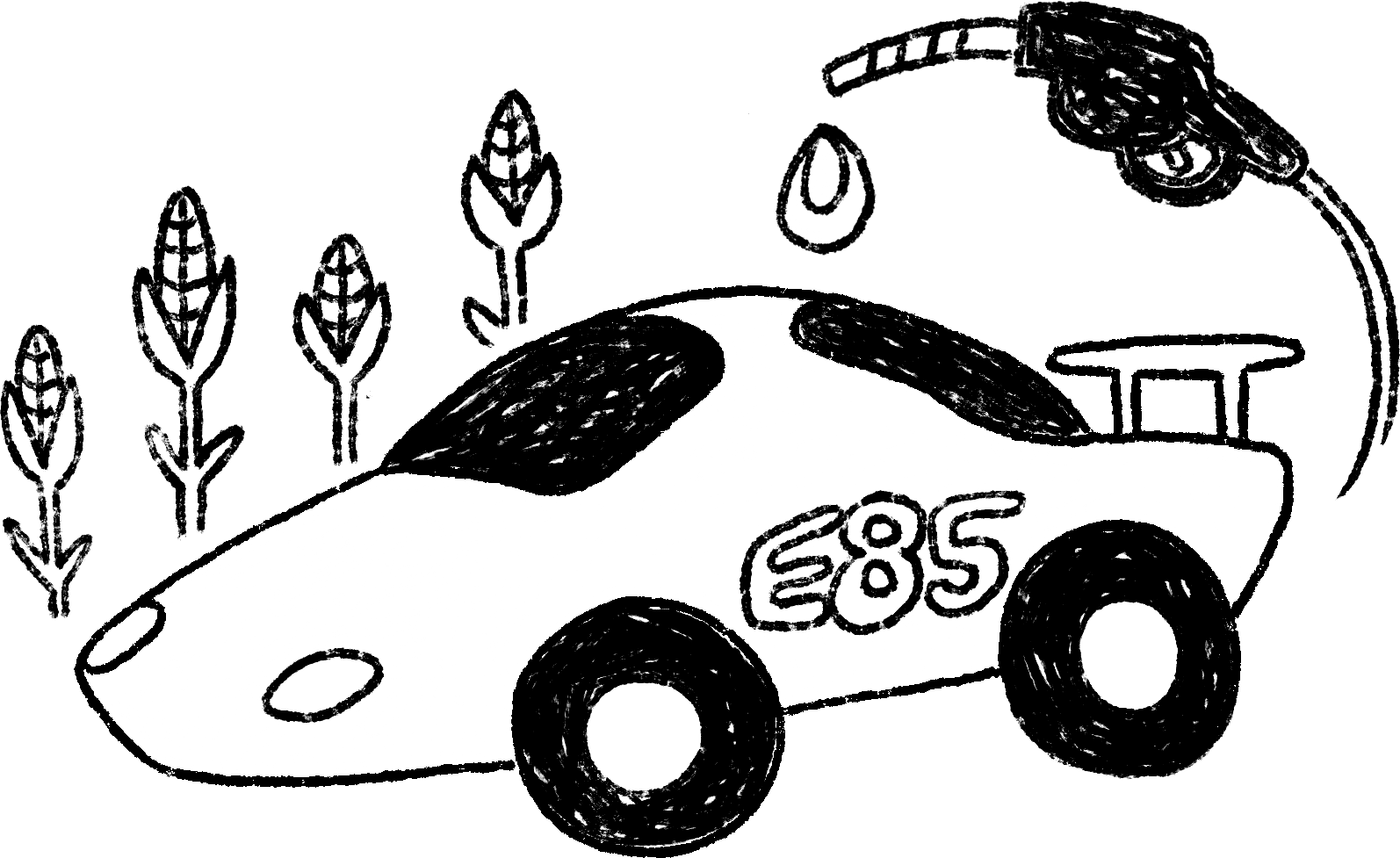Food, fuel and many other products come from multiple crops, including natural polymers from soybean and corn, dairy products and more. In this unit, students learn about fermentation and transesterification, ethanol and biodiesel production, what enzyme action can do, the value of co-products from ethanol and biodiesel and bioproducts.

Biofuels and bioproducts
Phenomenon
More cars are on the road than ever before. What impact will this have on fuel consumption and emissions? Are there alternatives to non-renewable fuel sources that can work cooperatively with the combustion engine?
Files
Fermentation factories
How can we create ethanol? What does the process of fermentation produce?
What do students do? Students create and perform experiments on various feedstocks to determine the role of each variable in the fermentation process.
What do students figure out? Students will develop a model of fermentation and be able to explain how ethanol is produced. Each component of the fermentation bag has an impact on the efficiency of the fermentation process.
Files
Ticketase
What role do enzymes play in the fermentation of starch?
What do students do? Students use tickets to represent starch molecules and interact as if they are enzymes to break the molecules down.
What do students figure out? Enzymes break molecules like starch into smaller molecules that can be used by yeast for the fermentation of sugars.
Files
Bioplastics design challenge
Can plant-based materials be used to engineer a biodegradable plastic?
What students do? Students design and test plant based plastics and their impact on the natural environment.
What students figure out? Students determine if plant based plastics are a practical replacement for traditional plastics for human needs and reflect on the impact of plastics in the natural world.
Files
Teacher background
Ethanol, biodiesel, and renewable diesel are the main types of biofuels that are commercially produced in the United States. Because they are domestically produced, they help to reduce America’s dependence on foreign sources of energy. In 2024, ethanol production reached nearly 18 billion gallons, renewable diesel nearly 4 billion gallons and biodiesel from soybeans just over 2 billion gallons. Replacing fossil fuels with biofuels potentially reduces undesirable environmental impacts of fossil fuel production and use, including lowering GHG emissions and dependence on unstable foreign suppliers. The energy in ethanol, biodiesel, and renewable diesel exceeds the fossil fuel energy used to grow and process the corn and soybeans into renewable fuels.
Commercial production of fuel ethanol in the U.S. involves breaking down the starch present in corn into simple sugars (glucose), feeding these sugars to yeast (fermentation), and then recovering the main product (ethanol) and byproducts (animal feed and carbon dioxide). The value of corn as a feedstock for ethanol production is due to the large amount of carbohydrates, specifically starch. Starch can be easily processed to break down into simple sugars, which can then be fed to yeast to produce ethanol. Fuel ethanol is ethanol that has been highly concentrated to remove water and blended with other compounds to render the alcohol undrinkable. Modern ethanol production can produce approximately 2.8 gallons of fuel ethanol per bushel of corn. The dry mill ethanol production process uses only the starch portion of the corn, about 66% of the kernel. All the remaining nutrients—protein, fat, minerals, and vitamins—are concentrated into distillers grain, a valuable feed for livestock such as dairy and beef cattle. Nearly 40% of the United States’ corn crop is used to produce ethanol.
Commercial production of biodiesel in the U.S. involves the breaking down of soybean and other plant oils through the transesterification process into biodiesel and glycerin. Alternatively, commercial production of renewable diesel in the U.S. is produced through a thermochemical process that includes hydrotreating to stabilize the fuel at all temperatures for higher fuel blends. Renewable diesel is chemically the same as petroleum diesel and can be used in its pure form. The value of soybeans as a feedstock for both biodiesel and renewable diesel production is due to the high volume of lipids, specifically oil, found in the soybean. Oils can be processed through either the transesterification or thermochemical processes to create biodiesel or renewable diesel. Modern biodiesel and renewable diesel production can produce approximately 1.5 gallons of fuel per bushel of soybeans. These production processes use only the oil portions of the grain, about 20% of the soybean. All the remaining nutrients, protein, starch, minerals and vitamins are used for livestock feed for chickens, cattle and pigs, human consumption and bioproducts production.
The range of bioproducts is vast. Corn and soy used in making bioplastics reduce greenhouse gases from petroleum based plastics and are biodegradable or compostable. Soy polymer is used in tires and the soles of shoes, and the glycerin from the production of biodiesel is used in many additional products from cosmetics to soaps. Both soy and corn may be used to make plastic bottles and plastic eating utensils.
Next Generation Science Standards
Science and Engineering Practices
- Constructing Explanations and Designing Solutions
Disciplinary Core Ideas
- LS1C Organization for Matter and Energy Flow in Organisms
- LS2B Cycles of Matter and Energy Transfer in Ecosystems
Cross Cutting Concept
- Energy and Matter
Join our email list
Sign up for the Nourish the Future mailing list: Be the first to hear about upcoming workshops and new curriculum and resources!